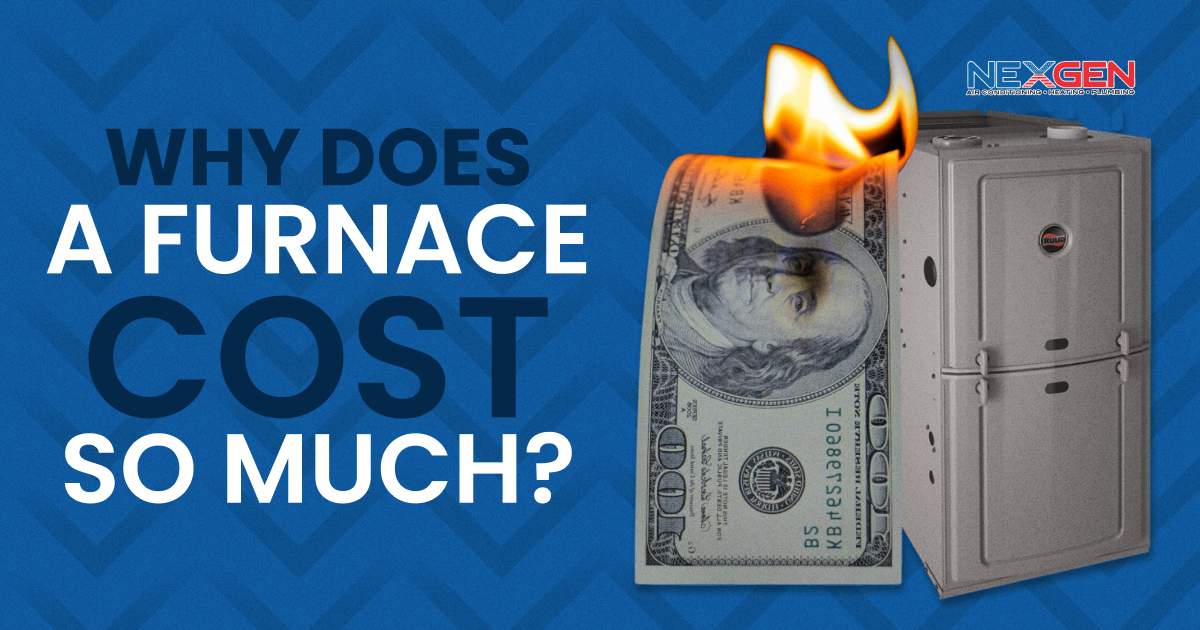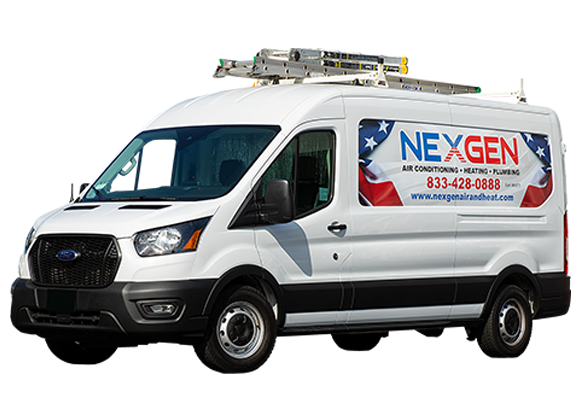Why Does a Furnace Cost So Much?

Many people ask us why a furnace costs so much. According to Forbes, installing a furnace costs $4,700 on average (in 2023 dollars), but you could spend less or as much as $10,000 depending on the type of appliance.¹ It’s important to realize a furnace is a long-term investment. It can last for 15 years, but if you’re diligent enough with scheduling maintenance and heating services, a 20-year-old furnace isn’t unheard of. But what makes the upfront costs of furnace installation so expensive?
Here’s a look at why a furnace is often such a big investment.
Heating Company Profit
The upfront cost is less dramatic when the longevity of the equipment is considered. However, companies that sell furnaces don’t benefit as much. That’s because they must wait longer before you need a new one, and they sell only a few furnaces over any given time. Selling furnaces that last is good for a company’s reputation. But it must earn as much as possible on each sale. Therefore, high selling prices can be hard to avoid.
Furnaces Are Complex
A furnace is a complex assembly of parts and components. Each one has differences and every home has unique installation requirements. There may also be space constraints and gas, electrical, or ventilation upgrades to make.
The type of furnace matters, too. An electric furnace costs from $2,000 to $7,000; operating it requires paying high electricity prices each month. Furnaces use a lot of electricity. However, a natural gas furnace can cost $3,800 to $10,000 to install, while natural gas is generally cheaper than electricity, especially in very cold climates. An oil furnace requires paying high oil costs over its life (on top of a $6,750 to $10,000+ installation price), but usually lasts longer than a gas furnace and is safer to operate.¹
Furnace Cost Increases with Equipment Size
The size of a furnace is measured in British Thermal Units (BTUs). To determine the number of BTUs needed, a contractor will factor in your home’s square footage and a few other variables. The square footage is multiplied by 40, meaning a 2,000-square-foot home requires about an 80,000 BTU furnace (more if your area has colder winters). A 40,000 to 60,000 BTU system will cost $2,000 to $3,000. Higher capacity units are costlier to install, as are those for homes that are drafty or have higher ceilings.¹
Safety Concerns
Furnace installation requires a great deal of expertise. It can be dangerous because a contractor may have to work with gas connections, which can lead to exposure to harmful fumes, chemicals, or carbon monoxide. Therefore, they must be attentive when testing connections and setting up the appliance and its ventilation. Improper testing can lead to furnace damage or an explosion.
A knowledgeable and well-equipped technician won’t miss any details and will ensure your furnace will work correctly. Nonetheless, you’re paying for their expertise. This includes the cost of education, training, and licensure as well as their health insurance (policies can be quite expensive for technicians who work with large appliances). Even if the contractor is insured through their employer, insurance costs will indirectly influence furnace costs.
Installation Entails More than Just the Furnace
For a gas-powered furnace, a contractor must set up a gas connection and vent. Installing an electric furnace requires running wiring, adding a circuit breaker, or perhaps updating an electrical panel. Holes are often drilled for pipes and wires. The technician must also transport the furnace and move it to the proper location, which can be difficult depending on the space available and if the unit is placed downstairs. Installing a furnace also takes several hours; it’s not a quick process.
Other Cost Factors When Installing a Furnace
The furnace cost you pay also depends on:
- Efficiency: High-efficiency furnaces cost more upfront to install, as they’re more complicated and use higher-quality parts. Designing and building such a furnace is an investment for manufacturers, which pass on the cost to installers. As more efficient units become increasingly popular, the supply of cheaper, less efficient furnaces is decreasing, so even their prices are going up.
- Cost of Materials: Furnace parts are expensive to make. The cost of materials used to produce them can fluctuate, especially when there are shortages. Finding skilled labor is also an issue. Assembling the components takes time and requires specialized skills, but many are small and break easily if not handled correctly. If a part breaks, rework adds to the cost of production.
- Brand: A lack of competition often affects furnace prices. Local companies may work with only certain brands, or the company may operate within a limited radius to save on travel costs. The appliance brand has a big influence on cost; some brands are known for lower prices, but other well-known luxury brands are on the higher end of the price scale.
Financing a furnace is another cost consideration. It can make installation more affordable. If the contractor finances the unit, you may pay little or no interest. But if it works with a partner, the lender will charge interest and you could pay much more for the furnace than the initial cost of installation.
Is the Furnace Cost Worth It?
Installing a furnace of the same type costs less than converting from one furnace to another, which may also require moving the location of the unit or modifying or replacing ductwork. In any case, installing a furnace can improve energy efficiency and indoor air quality, so you not only save on utilities but breathe cleaner air. Financing, rebates, and tax credits can make installation more affordable.
People often think they can save with a DIY furnace installation. It can avoid paying for labor but requires working with complex tools and equipment, not to mention dangerous elements such as gas lines. You might require a technician after all, especially when a mistake requires costly repairs. A DIY installation can also void the warranty, as furnace warranties often require hiring a professional for installation.
Hire NexGen for Heater Installation
At NexGen, we install and replace gas, oil, and electric furnaces in Southern California. Our licensed technicians install each unit correctly and ensure it runs reliably and efficiently. Safety is our top priority. We’re also committed to helping you afford the furnace cost when it’s time for a replacement. Our in-house financing includes low-interest rates and affordable monthly payments for new units and major repairs. Apply for financing or request a quote by calling (805) 301-6788 today.
Source:





















